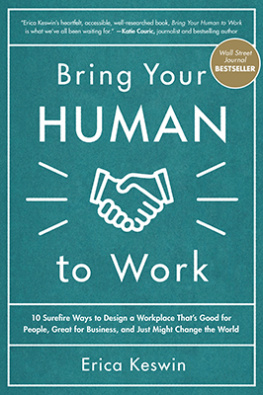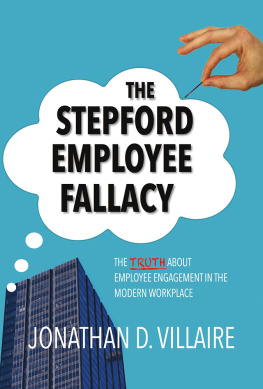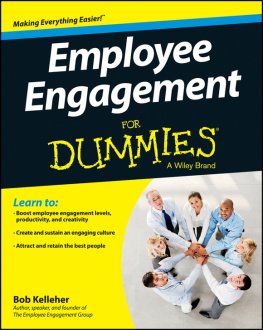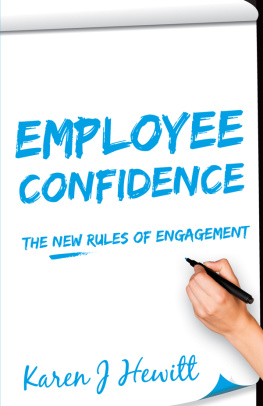If you enjoyed this book, discover your next great read with the following excerpt.
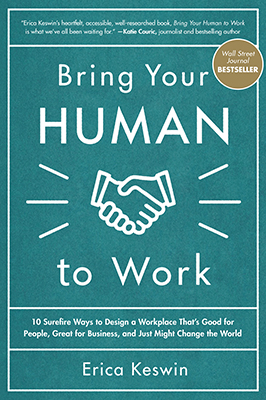
1
Be Real: Speak in a Human Voice
E llen Bennett, a self-described millennial with an old soul, struts across the conference stage, describing how five years ago she wanted to make the world a better place. All I had was my phone, she tells the audience. Fast forward to todays event: the New York City 2015 Tech Table Summit, a collection of leaders and tastemakers in hospitality, and this proud, f-bomb-dropping, totally pumped CEO has taken the stage. Her company, Hedley & Bennett, is the go-to purveyor of chic aprons, outfitting pro and DIY foodies around the world. How did one young woman turn something as ho-hum as a kitchen apron into a booming lifestyle brand, worn and loved by employees in over 5,000 restaurants and hotels worldwide?
As Bennett puts it, Be real, and encourage other people to be real. Sounds easy enough. But what does it mean to be real? What does being real have to do with launching a successful business? As Bennett explains, when she started making aprons, all she had was her phone and herself. It was only fitting that her product would be infused with her special touch and her naturally sparkly personalitythere wasnt anything getting in her way! Admittedly, not all companies are cut from such personable cloth. Yet regardless of a founders temperament, the product, or the available resources, the same principle applies: authenticity is good for business.
While I invite readers to pick and choose from the 10 chapters in this book to find what works for them, this chapter is first for a reason. In order for a human company to flourish, it has to be genuine, aligned, and true to itself. A real company actually flaunts its humanity; it doesnt hide it. More and more, customers of all ages are flocking to authenticity1 and so are employees.
In fact, in a 2013 study, professors from Harvard University, the London Business School, and the University of North Carolina discovered that when companies emphasize newcomers authentic best selves over an organizational identity, this emphasis leads to greater employee retention and customer satisfaction within six months.2
In this chapter, I share three ways smart companies are bringing their human to their brands by being real.
Know Your Brands Values
Even if you havent taken the time to sit down with your employees to articulate and communicate your companys set of values, one thing is for sure: these values drive everything you and your company do, whether youre aware of their impact or not. The thing about values is that they are hard at work, calling the shots of your business, even when they are implicit. Thats why its so important to make our values seen and heard.
Learning How to Live by Values at JetBlue University
Its Wednesday in Orlando, Florida. Outside the windows of this building, located a few miles from the airport, the sky is grey, but the auditorium is bright and lively. One by one, 176 people stand up and share their story:
My name is Mickey. Im from Jamaica, and I used to be a bartender at Madison Square Garden.
My name is Gloria. Im from Minnesota, and Ive worked in child services and luxury retail.
My name is Jonah, and Im an actor, but my dog made it onto Broadway before I did.
The crowdmostly a thirtysomething, cosmopolitan mix of extroverts and charmerscracks up. They are asked to hold their applause between introductions, but their enthusiasm makes it hard.
When I was invited to attend the new-hire orientation at JetBlue University, I had no idea what I was getting myself into. For anyone new to the crew, the experience is the sametotal Blue-Juice indoctrination. Drinking the Blue Juice is how JetBlue folks refer to their training.
To be honest, I didnt really understand all this amped-up team spirit at first. Then I heard, again and again, from all over the map at JetBlue:
After a career in aviation, this has been my dream: to have a job at JetBlue.
I love my job here at JetBlue and hope its my last.
My name is Amanda, and before JetBlue, I was a nobody.
As the leader-in-residence (the JetBlue executive who serves as an emcee during the training) announced at the first nights pep rally, Were kind of a cult!
After studying this feisty, highly disciplined company of 21,000 crew members, it became clear to me that their success had nothing to do with size or innovative technical brilliance like that of Google or Apple. They have only 5 percent of seats traveling in the air, yet their revenue over the 10 years ending in December 2016 grew almost 3x, far out-pacing the revenue growth of the industry.3 And, size notwithstanding, JetBlue has become one of the most iconic brands in the world. How did they do it? Its actually super simple and completely within reach for all of us.
Like Ellen Bennetts aprons, so clearly distinguishable from ordinary aprons, JetBlue also has a strong, very human, and very approachable brand identity. As a Johnson & Johnson executive asked a JetBlue leader at a meeting on innovation, You guys have managed to be an airline associated with love. How on earth do you do that?
It starts with their values.
At this recent orientation, Brad Sheehan, vice president of JetBlue University, described the company values to his 176 new crew members like this:
SafetyWe want our crew members to feel safe, so we take care of them physically and mentally.
IntegrityWe do the right thing when no one is looking.
CaringIf we can be nice to each other, it is easier to be nice to our customers.
PassionThe fuel that drives us to come to work. While we cant control gas prices (one type of fuel), we can hire for and control the other kind of fuel.
FunHow you bring your personality to JetBlue and make it to work. We want you to bring what we saw in you to work every day.
Leader after leader, speaking to the group, emphasized these values, describing them as the underpinnings of everything the company does. According to Executive Vice President and Chief People Officer Mike Elliott, these values are the glue that holds JetBlue together. These dynamic speakers didnt just tell the group the values; they showed how the values came alive in story after story, in videos, and sometimes in a customers own voice.
One unforgettable tale was told via an audio recording of a mothers voice. She recounted how she stood with her developmentally delayed teenage son outside of the family bathroom near her gate, waiting for a key that never came. The situation was getting dire; the boy desperately needed to use the restroom. A JetBlue crew member found her and not only helped her get into a different bathroom appropriate for the young boy, but also helped the mother take hands-on care of the boy in a situation where most would have turned away to avoid such intimacy.
It goes without saying that no group of people will always be aligned, yet these JetBlue values are clearly heartfelt, and even more importantly, always top-of-mind. Thats what it takes. Crew members are expected to have these values memorized, in the order they are listed and at the ready.
Truthfully, every time I fly JetBlue, I can see the values in real time. Recently I took a JetBlue flight from San Francisco to New York. After a long week of work, I was exhausted. Melvin, the lead crew member, welcomed us aboard and announced that he was going to be working with his best friend, James. Because I know the science showing that having friends at work makes us better at our jobs, I smiled. Everyone around me seemed more relaxed as well.
Next page
